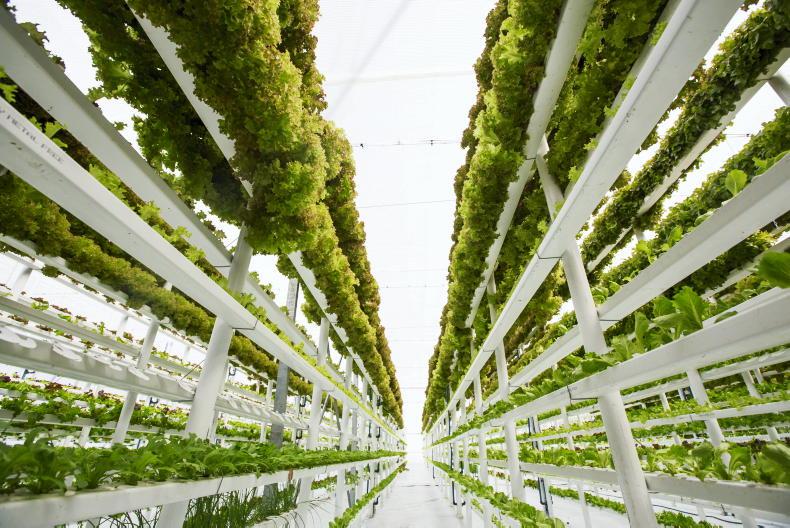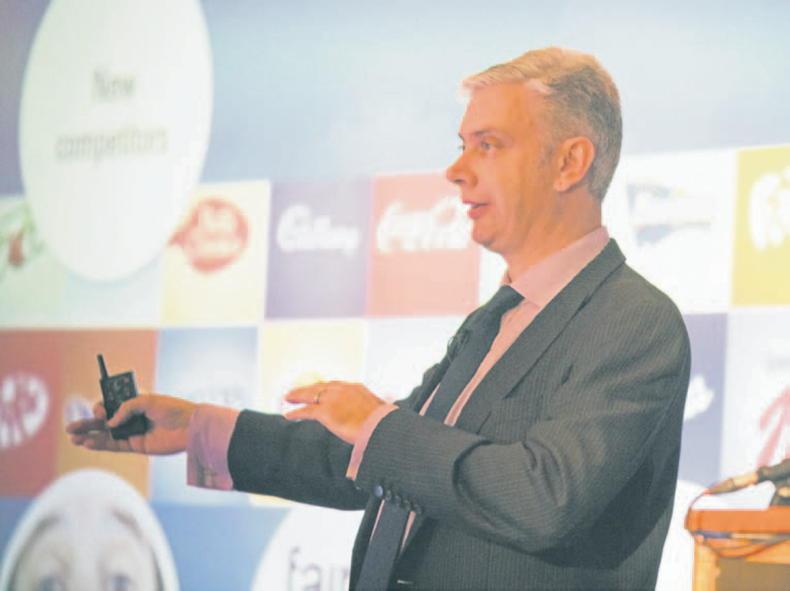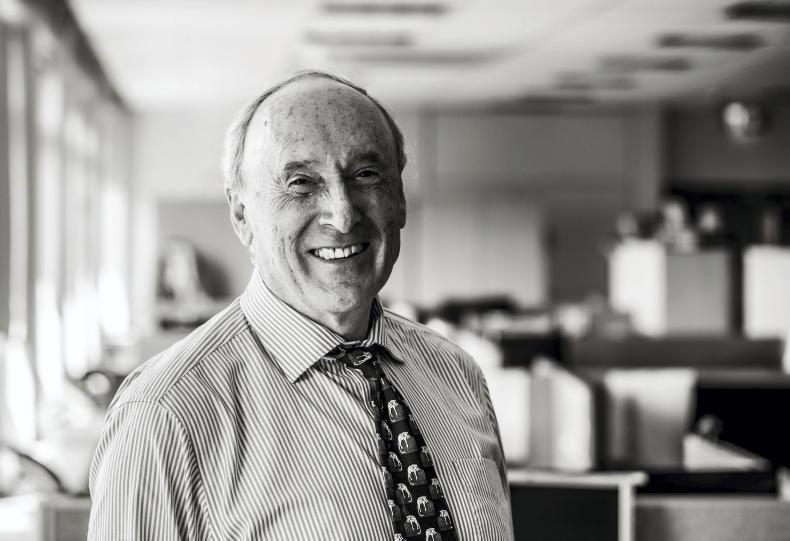Land in New Zealand is being purchased for permanent forestry from beef and sheep farmers who are exiting livestock with a view to go into carbon farming, KPMG agribusiness boss Ian Proudfoot said.
Speaking in advance of the launch of the Irish Farmers Journal Agribusiness report in association with KPMG, he told the Irish Farmers Journal the economics of carbon farming is already making sense in New Zealand and suggested that the economics are only going to get better.
“At the moment, carbon is priced at NZ$70 to NZ$80 per tonne (€40 to €50) but that could be NZ$200 per kilo (€100 to €120) very shortly and that means the economics of carbon farming are only getting better,” he said.
Profitability
Dairy farming in New Zealand is a lot more profitable than beef and sheep and is competing for land also. However, Proudfoot said despite the $9+/kg milk solids (40c/l) payout, dairy farmer margins are not as good given the increased costs of production.
The KPMG agribusiness boss is not convinced permanent forestry is the way forward and suggests that permanent forestry changes the composition of the local area.
“How farming sectors and industries interact and how farmers can sequester more carbon into soil, how farmers plant out riparian zones, how we integrate the sea, the land and blue carbon is not well defined yet but we need to find a way for them to interact.
“If carbon farming is scaling up, this will impact on our smaller communities because it will mean there might not be a need for the meatworks (the meat factory). This could change the dynamics of a small town that maybe has only one big industry or employer,” he said.
Exports out of New Zealand are valued at $52.2bn (€31m) and Proudfoot said dairy export value is 40% of this, which means it is hugely significant and important to the economy.
However, as Proudfoot said, the challenge for New Zealand is that the dairy industry has a high proportion of emissions.
With plans to charge farmers, a standoff has developed between farmers and the government around the whole area of sequestration and rewarding farmers for what sequestration their farms actually do.
Similar to some European countries, farmers have taken to the streets in the last 10 days to challenge the government’s position on sequestration reward.
Proudfoot, originally from West Sussex in England, is very familiar with the type of farming in Ireland and the UK where much of the food produced is grown on land, but the KPMG boss reckons this will change.
“Food in the future is not going to be produced where the productive land is. It will be grown where it will be consumed. Food will be produced using modern technologies.”
He went on to say that the driver of this is the transformational change that has happened in terms of how consumers eat food.
The three meals a day is gone for many people, and consumers have changed.
Food needs to evolve with how we live, and this change is really prevalent in Asia where people are commuting for much longer every day.

'Food in the future is not going to be produced where the productive land is. It will be grown where it will be consumed,' Ian Proudfoot says.
The other change driver Proudfoot talked about is that the cost of producing food is going up, and that means alternative proteins will only accelerate, so Proudfoot is adamant that moving the food production system will be quite different to what we had historically.
Proudfoot used the example of Singapore to describe this change.
He said: “Take that island of Singapore where they have set an ambition to produce 30% of the food that they consume in Singapore, on the island, by 2030. Singapore island is the size of the Isle of Wight. However, it has 5.64m people living on it.

Singapore uses vertical systems to produce food.
“This means vertical systems of producing food, innovation of intensive protein culturing, fermenting, growing food in the sea around them is a fascinating mix, and this is an indication of modern technologies and how they will evolve to produce more and more of the food consumed locally in those markets.”
Proudfoot reckons that there will be a market for food that is produced in the likes of Ireland and the UK, but that it will be a premium market that can allow for the higher costs of producing food in this way.
“What I call the modern regenerative system is where food is produced the same as it is now, but only better everything, better people management, better nutrient management, better on emissions.
“There will be a half billion to one billion people that will consume this type of food and they will only give a licence to countries that go out of their way to do the right thing.”
Labour, and especially overseas labour, in some countries is getting harder to get and Proudfoot believes the cheap migrant labour won’t be available in coming years.
Equally, consumers and the ethics of consumers will change, meaning they will frown on such practices.
Beef and sheep farms in New Zealand are being purchased for permanent forestry at the moment with a view to go carbon farming.Dairy farming in New Zealand is going well at record payout price but margins are tighter because of increased costs.How food is produced is changing and while there will be a market for modern regenerative land-based food, it will have to be sold at a premium to pay for the higher costs.
Land in New Zealand is being purchased for permanent forestry from beef and sheep farmers who are exiting livestock with a view to go into carbon farming, KPMG agribusiness boss Ian Proudfoot said.
Speaking in advance of the launch of the Irish Farmers Journal Agribusiness report in association with KPMG, he told the Irish Farmers Journal the economics of carbon farming is already making sense in New Zealand and suggested that the economics are only going to get better.
“At the moment, carbon is priced at NZ$70 to NZ$80 per tonne (€40 to €50) but that could be NZ$200 per kilo (€100 to €120) very shortly and that means the economics of carbon farming are only getting better,” he said.
Profitability
Dairy farming in New Zealand is a lot more profitable than beef and sheep and is competing for land also. However, Proudfoot said despite the $9+/kg milk solids (40c/l) payout, dairy farmer margins are not as good given the increased costs of production.
The KPMG agribusiness boss is not convinced permanent forestry is the way forward and suggests that permanent forestry changes the composition of the local area.
“How farming sectors and industries interact and how farmers can sequester more carbon into soil, how farmers plant out riparian zones, how we integrate the sea, the land and blue carbon is not well defined yet but we need to find a way for them to interact.
“If carbon farming is scaling up, this will impact on our smaller communities because it will mean there might not be a need for the meatworks (the meat factory). This could change the dynamics of a small town that maybe has only one big industry or employer,” he said.
Exports out of New Zealand are valued at $52.2bn (€31m) and Proudfoot said dairy export value is 40% of this, which means it is hugely significant and important to the economy.
However, as Proudfoot said, the challenge for New Zealand is that the dairy industry has a high proportion of emissions.
With plans to charge farmers, a standoff has developed between farmers and the government around the whole area of sequestration and rewarding farmers for what sequestration their farms actually do.
Similar to some European countries, farmers have taken to the streets in the last 10 days to challenge the government’s position on sequestration reward.
Proudfoot, originally from West Sussex in England, is very familiar with the type of farming in Ireland and the UK where much of the food produced is grown on land, but the KPMG boss reckons this will change.
“Food in the future is not going to be produced where the productive land is. It will be grown where it will be consumed. Food will be produced using modern technologies.”
He went on to say that the driver of this is the transformational change that has happened in terms of how consumers eat food.
The three meals a day is gone for many people, and consumers have changed.
Food needs to evolve with how we live, and this change is really prevalent in Asia where people are commuting for much longer every day.

'Food in the future is not going to be produced where the productive land is. It will be grown where it will be consumed,' Ian Proudfoot says.
The other change driver Proudfoot talked about is that the cost of producing food is going up, and that means alternative proteins will only accelerate, so Proudfoot is adamant that moving the food production system will be quite different to what we had historically.
Proudfoot used the example of Singapore to describe this change.
He said: “Take that island of Singapore where they have set an ambition to produce 30% of the food that they consume in Singapore, on the island, by 2030. Singapore island is the size of the Isle of Wight. However, it has 5.64m people living on it.

Singapore uses vertical systems to produce food.
“This means vertical systems of producing food, innovation of intensive protein culturing, fermenting, growing food in the sea around them is a fascinating mix, and this is an indication of modern technologies and how they will evolve to produce more and more of the food consumed locally in those markets.”
Proudfoot reckons that there will be a market for food that is produced in the likes of Ireland and the UK, but that it will be a premium market that can allow for the higher costs of producing food in this way.
“What I call the modern regenerative system is where food is produced the same as it is now, but only better everything, better people management, better nutrient management, better on emissions.
“There will be a half billion to one billion people that will consume this type of food and they will only give a licence to countries that go out of their way to do the right thing.”
Labour, and especially overseas labour, in some countries is getting harder to get and Proudfoot believes the cheap migrant labour won’t be available in coming years.
Equally, consumers and the ethics of consumers will change, meaning they will frown on such practices.
Beef and sheep farms in New Zealand are being purchased for permanent forestry at the moment with a view to go carbon farming.Dairy farming in New Zealand is going well at record payout price but margins are tighter because of increased costs.How food is produced is changing and while there will be a market for modern regenerative land-based food, it will have to be sold at a premium to pay for the higher costs. 











SHARING OPTIONS